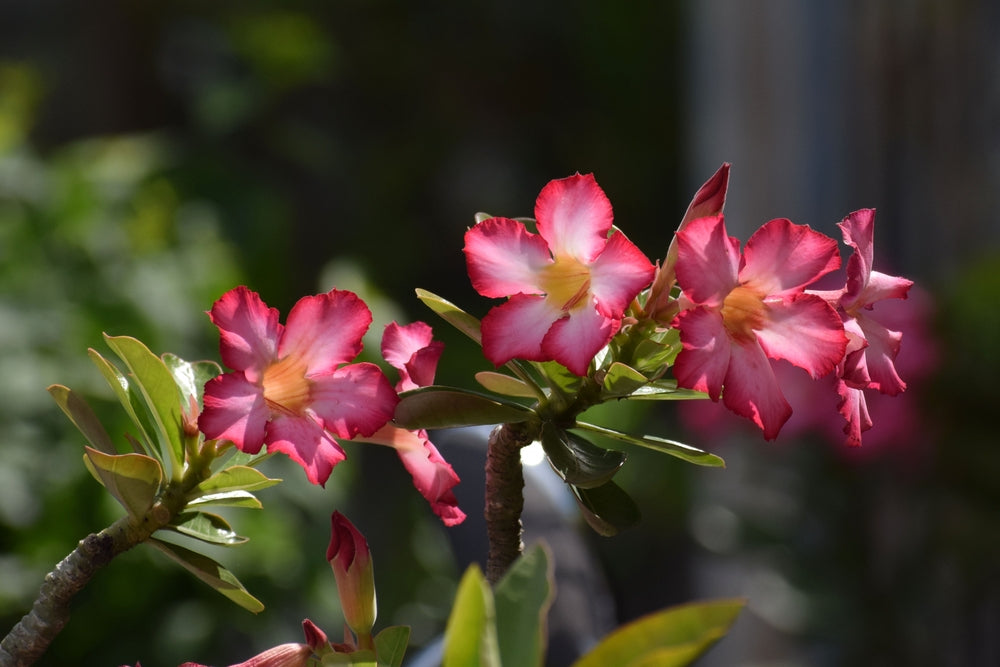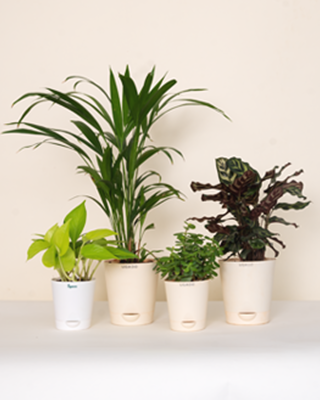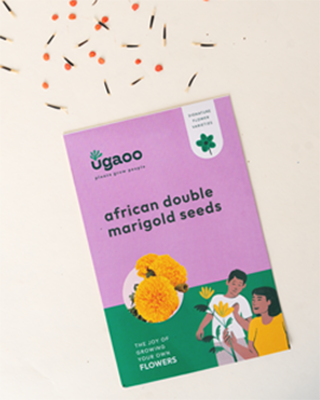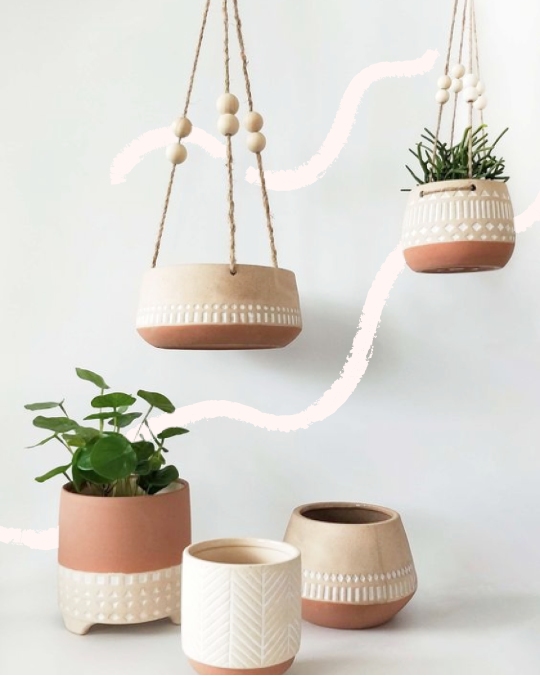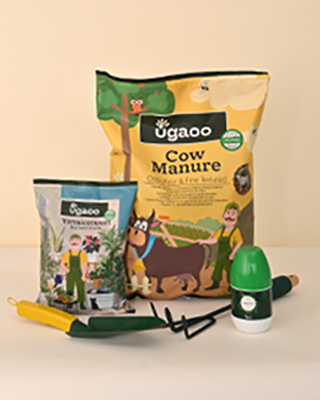Vegetable and fruit gardens are often the epitome of home gardening. The satisfaction you get watching your fruits and vegetables grow is absolutely unparalleled. You might even wake up early every morning with thoughts about how much your little plant babies have grown overnight, and even the slightest changes can bring you absolute joy!
But as rewarding as it is, it can also be equally taxing for your body. Squatting down for countless hours, harvesting your produce, pruning spend blooms or even just for plant maintenance, the whole process can prove to be quite draining.
So, when you're tired of squatting and breaking your back, just make use of plant support to aid upward creeper plant growth! This way, the vertical plants will allow you to just pluck out good harvest and continue plant maintenance, all while standing.
• Benefits of Growing Creeper Produce Plants

1. Space Efficiency
Vertical gardening allows you to maximize the use of limited space, making it an excellent option for small yards, balconies, or even indoor gardens. This is particularly beneficial for urban dwellers with limited space for traditional horizontal gardening.
2. Higher Yields
When you grow plants vertically, you can use the vertical space to cultivate more plants in the same square footage compared to traditional gardening. This often leads to higher yields and increased productivity.
3. Improved Air Circulation
Vertical gardening helps improve air circulation around the plants. This can reduce the risk of diseases and pests that thrive in stagnant air conditions, promoting a healthier growing environment.
4. Easier Harvesting and Maintenance
Harvesting becomes more accessible in a vertical garden as plants are often at eye level or easily reachable. This makes it more convenient to tend to and harvest your crops. Additionally, vertical gardening can reduce the need for bending and kneeling, making maintenance tasks less strenuous.
5. Aesthetic Appeal
Vertical gardens can be visually striking and add a unique and attractive element to your space. They can be designed in various creative ways, enhancing the overall aesthetics of your garden or living area.
6. Optimal Sunlight Exposure

Vertical gardening allows for better sunlight exposure for each plant. By arranging plants vertically, you can ensure that all plants receive adequate sunlight, even in areas with limited direct sunlight.
7. Reduced Soil Erosion
Creeper plants can help prevent soil erosion, as the soil is contained within the gardening structures. This is particularly beneficial in areas with sloped terrain.
8. Water Efficiency
Vertical gardening systems often require less water compared to traditional gardens. Water can be more efficiently directed to the plants, reducing the risk of water wastage.
9. Accessibility and Inclusivity
Vertical gardens can be designed to accommodate different physical abilities, making gardening more accessible to a broader range of individuals. This inclusivity is especially important for elderly or disabled gardeners.
10. Year-Round Gardening
Climbing plants, whether vegetables or fruits, can be adapted for indoor use, allowing for year-round cultivation. This is advantageous in regions with extreme weather conditions or limited growing seasons.
• How To Get Started
1. Climbing Plants Need Proper Positioning
Whether you're planting creeping vegetable plants or fruits, they need to be positioned according to their individual requirements. Some may require higher levels of daily sunlight while others, not so much.
How much sunlight they need will determine where they can be planted. North-facing walls usually don't get that much sunlight, which means you can make use of them for plants that require relatively lesser light and can tolerate chilly areas.
For climbing plants that need higher sunlight, east-facing walls to get them the light they need during morning hours are your best bet.
2. Framework Designs for Creeper Plants

Vertical climbing plants need appropriate support. Whether grown in containers or in the ground, they need to be supported well enough so that they grow and thrive with stems that can curl around their support perfectly, and not droopy stems that can't grow produce.
Trellises are perhaps the most common and versatile framework designs. They consist of a series of vertical and horizontal slats or bars that create a grid-like structure. Trellises can be standalone or attached to walls and fences, providing support for climbing plants such as vines and certain vegetables.
There are some other frameworks that you can just create yourself with wooden grids and around fences. You can train your climbing vegetable plants to grow on fences so they can create a kind of green screen, while other fast growing fruit plants can be made to grow on arches that stand overhead.
3. When To Plant?
Most climbing plants are best when planted before extreme cold weathers. They need to develop and establish their roots in the ground before the soil freezes.
Thus, these vertical garden vegetables are best when planted in fall months, and if some plants are slow-growing creepers, then they must be planted in late spring months so that they have just enough time to grow and fix their roots.
4. Training Your Climbing Plants to Climb

Whatever framework you may want your climbers to adapt to, training them to do so is essential when they start spreading. When these plants begin to develop branches, tie their tender branches with threads to develop a proper growing habit.
After a while, they will adapt to growing the way you want them to but till then, tying their tendrils for optimal growth is your only way of ensuring good, supported produce.
5. Watering and Maintenance
In the initial phases, when your plant is beginning to establish itself, watering regularly is very important. You must ensure that all your vegetable plants and fruit climber plants are well hydrated but still do not retain too much water as it could lead to root rot.
Water these plants when you feel the soil drying out and continue watering them twice every week at least.
6. Pruning Your Creeper and Climber Plants
Pruning climbing and creeping plants is vital for ensuring healthy growth. Removing dead or diseased foliage allows for better air circulation, reducing the risk of fungal infections. Pruning also stimulates the development of new shoots, fostering denser and more robust foliage.
By controlling the plant's size and shape, you can optimize sunlight exposure, promoting photosynthesis and overall vitality. Additionally, strategic pruning enhances flowering and fruiting, contributing to a visually appealing and productive garden. Overall, proper pruning is a fundamental practice to maintain the well-being and aesthetic quality of climbing and creeping plants.
7. Mulching Around The Base
Mulching around climbing and creeping plants is vital for several reasons. It conserves soil moisture, reducing the need for frequent watering and aiding plants during dry periods. Mulch acts as a barrier, suppressing weed growth that could compete for nutrients.
It insulates the soil, providing a more stable temperature for plant roots. Moreover, mulch protects against soil erosion, preventing the exposure of delicate roots. As the mulch breaks down, it enriches the soil with organic matter, fostering a healthier environment for climbing and creeping plants. Ultimately, mulching is a multifaceted practice that contributes to the overall well-being and sustainability of these plants.
• Vegetables and Fruits to Grow as Creeping and Climbing Plants
a. Vegetables Easy to Grow As Climbers and Creepers

1. Peas
2. Cucumbers
3. Bitter Gourd
4. Bottle Gourd
b. Creeper and Climber Fruits
1. Kiwis
2. Dragon Fruits
3. Passion Fruits
4. Grapes
5. Gooseberry or Amla






